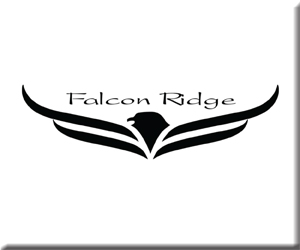Evolution Of The Golf Swing
By Tom Abts
There is much confusion about the golf swing. For many people, it’s a fun puzzle to be solved. For many more, it’s a source of confusion and frustration.
At the root of this puzzle – and the resulting frustration and confusion – is that no one talks about the steps needed to develop a good golf swing.
Ben Hogan stated that most people’s natural way to swing a golf club is all wrong. That’s not to say that the golf swing shouldn’t involve natural motions. It’s just that people don’t use those good natural motions when they begin to take up golf.
Over these many years, I’ve seen two typical types of swings from beginners (and many long time players). First: most people want to pick up the club and beat down on the ball – sort of like killing a snake. Second: in their attempt to get the ball airborne, most people try to use the club as a scoop to lift the ball up into the air. Both types of swings are not good, and doomed to failure.
Ironically, though both swings are bad, they are also used in the worst way. What I mean is that most people use the scoop action with their irons, and the snake killing move with their driver. If they reversed the two styles, they would be much better off. The scooping action would be better with the driver off of a tee. How often do you see big divots on the tee box from people crashing their driver into the turf? A lot. And, the scooping action with the irons leads to topping the ball and fat shots.
The golf swing is a sweep – not a scoop or a chop.
People need to learn how to sweep the ball. Putting is a great place to start. Chopping down on the ball with a putter doesn’t work very well. And there is no need to scoop with a putter – it doesn’t have to go up in the air. The putter is a flat faced club used to roll the ball on a smooth surface. Lofted clubs hit the ball up in the air. When someone says, “Let the club do the work” that’s what they mean – let the loft hit it up in the air – don’t try to help it up in the air.
And, the driver is made for sweeping the ball off of a tee. Though the driver has very little loft, the tee makes it much easier to sweep the ball and get it up in the air.
But, at first, the chopping down swing feels more powerful, so most people beat down with the driver and break the tee – instead of sweeping the ball off of the tee.
Most people struggle with slicing the golf ball – especially with a driver. Irons and fairway woods have more loft – the loft lessens the sidespin so those shots don’t slice as much as a flatter face driver.
The reason people slice is that the clubface is open when it contacts the ball. Scooping opens the clubface. And chopping down usually leaves the clubface open.
People need to learn how to close the clubface. The easiest way is to practice closing the clubface is with the putter. Practice feeling the toe of the putter close the face while hitting the putt. Try to hook the putt with the putter.
Then, when practicing chipping, try to use a sweeping putting stroke. When that becomes comfortable, try to close the face during the chipping stroke. Hopefully, you can put hook sidespin on your chip shots. This closing of the clubface is a necessary step in the evolution of a player’s golf swing.
All good players have developed a hook golf swing. And really good players have learned how to control their hook. Unfortunately, most good players – and especially Tour players – are working on things that are not what the average player should be doing, and especially bad for the beginning player. Trying to do the things to fight a hook before you’ve developed a hook swing is a disaster.
First I should explain what is a hook swing. It is a sweeping motion that goes from in to out and has a closed clubface that puts hook spin on the ball. So the shot starts out right of the target and turns left towards the target.
How much should it go from in to out, and how closed should the face be? And which comes first?
I believe that golfers need to learn to close the clubface first. A slicer will not swing from in to out if they are already worried about the ball flying off to the right. Once they know that the ball will spin to the left, they will with comfort begin to swing right of their target, knowing that the ball will come back.
A “strong” grip will close the clubface easier than a neutral grip. A strong grip means that the “Vs” of the hands on the shaft point to the right shoulder or even right of that. With a “neutral” grip, the “Vs” point to your chin. You can see that if you turn your hands to the left, that the strong grip turns the club more than the neutral grip.
Golfers need to learn how to turn over the club with their hands so they can put hook spin on the ball and not worry about slicing. When they become comfortable hooking the ball, then they can swing to the right of their target knowing that the ball will hook and come back to the target. This skill is essential to moving forward with developing a good golf swing.
Once the golfer has developed a hook golf swing, all of the modern swing theories are worth looking into. Those theories are based on controlling a hook and making the swing more consistent. But, you can’t leapfrog. You have to go through the stages and develop a hook swing.
Evolution takes time. A similar word – revolution – doesn’t want to wait for evolution. Too many people opt for the quick fix – revolution, instead of going through the necessary stages – evolution. Lots of golfers spend way more time on quick fixes that never really hold-up than they would if they went through the stages of evolution. There are no shortcuts, but getting there the right way is worth it!































